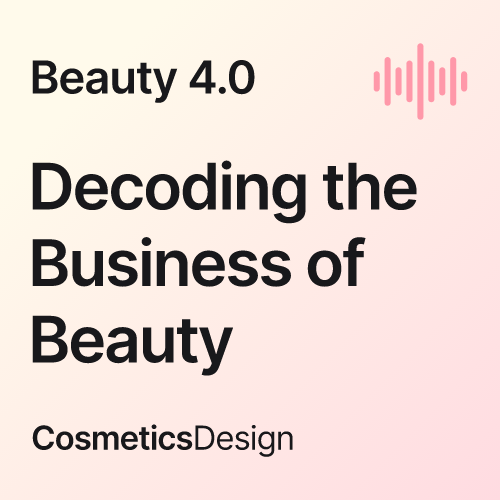Digital transformation: Kao Corp pumps $136m into digital as it seeks to offset cosmetics sales slump
![Kao is in its digital transformation to enhance the competitiveness of its cosmetics division. [Kao Corp]](/var/wrbm_gb_food_pharma/storage/images/_aliases/wrbm_large/publications/cosmetics/cosmeticsdesign-asia.com/headlines/business-financial/kao-corp-pumps-136m-into-digital-as-it-seeks-to-offset-cosmetics-sales-slump/12636224-1-eng-GB/Kao-Corp-pumps-136m-into-digital-as-it-seeks-to-offset-cosmetics-sales-slump.jpg)
With digital tools, the company hopes to be able to enhance its value proposition and user experience.
“A good example of this approach is KATE LIP MONSTER, a lipstick launched in April,” said President and CEO Yoshihiro Hasebe during a CEO meeting.
“By effectively communicating its features, of not discolouring easily even when a face mask is worn and long-lasting moisture by using digital marketing, we succeeded in gaining its recognition and support among consumers. As a result, the product gained a high market share.”
In June, the company ended the use of hair dye swatches, little bundles of synthetic hair, to reduce the use of plastic by about 56 tonnes annually.
Kao replaced physical samples with an augmented reality make-up try-on application to simulate the hair colours via an app powered by Taiwanese tech firm Perfect Corp and its YouCam Make-up App.
“Going forward, we will develop this service to be a system that allows users to have the one and only hair colour experience in the world. Kao’s hair colorant to which Kao’s HD³ Dye Technology is applied shows different hair colours depending on the angle from which it is viewed. We will expand this system by using digital technology.”
The company said it plans to establish a ‘Digital Life Platform’, which will enable consumers to perform sebum RNA monitoring, hair colour simulation and skin analysis using a smartphone.
According to the company, it would be investing JPY15bn ($136.4m) on its digital transformation. Hasebe said aims to build its in-house capabilities and not rely on external vendors.
“We will manage digital transformation in-house without solely relying on vendors, we will be able to produce a huge change even at a cost of as low as 15 billion yen,” said Hasebe.
In 2020, Kao’s net sales decreased 5.2% while operating income decreased 17.1% on a like-for-like basis.
Its cosmetics business, which consists of brands including Kanebo, SENSAI, freeplus and Curél, decreased by 22.1%. Skin care, on the other hand, increased 1.4%, driven by sales of hygiene products such as hand soap and hand sanitiser.
“Due to the higher sales composition of make-up products, we have been deemed as performing poorly compared to competitors,” said Hasebe.
He remained positive, however, that its portfolio could thrive in the current uncertain climate.
“We can revitalise the market with make-up products that meet consumer needs, even in the current difficult market environment. We will reinforce our business by building strong synergies between skin care products and make-up products.”
During the meeting, it was also revealed that that the company is considering divesting brands or products that generate JPY5bn or less, that have a profit margin of less than 15%, and that have no growth potential.
Hasebe said: “We will not abandon such brands or products if they have growth potential or become important units. If we are to abandon a business, we may sell it along with its associated brands. We aim to complete this selection process within one to two years.”
![Lips Carpenter aims to tap into the interest in clean and sustainable products to drive growth. [Lips Carpenter]](/var/wrbm_gb_food_pharma/storage/images/_aliases/wrbm_medium/publications/cosmetics/cosmeticsdesign-asia.com/headlines/brand-innovation/lips-carpenter-zeroing-in-on-clean-and-sustainable-beauty-trend-to-drive-growth/12733806-1-eng-GB/Lips-Carpenter-zeroing-in-on-clean-and-sustainable-beauty-trend-to-drive-growth.jpg)
![Kao Corporation has been expanding its digital tester capabilities as part of K25 plans. [Kao Corp / KATE]](/var/wrbm_gb_food_pharma/storage/images/_aliases/wrbm_medium/publications/cosmetics/cosmeticsdesign-asia.com/headlines/brand-innovation/kao-expands-digital-tester-offerings-for-kate-under-competitiveness-push/12694193-1-eng-GB/Kao-expands-digital-tester-offerings-for-KATE-under-competitiveness-push.jpg)
![Top five stories on the digital developments and beauty tech in the cosmetics industry, [Getty Images]](/var/wrbm_gb_food_pharma/storage/images/_aliases/wrbm_medium/publications/cosmetics/cosmeticsdesign-asia.com/headlines/market-trends/digital-dive-top-stories-on-digital-developments-making-waves-in-the-apac-beauty-industry2/12656229-1-eng-GB/Digital-Dive-Top-stories-on-digital-developments-making-waves-in-the-APAC-beauty-industry.jpg)
![Our updates on financial results, M&As and funding drives in the cosmetics industry. [L'Occitane]](/var/wrbm_gb_food_pharma/storage/images/_aliases/wrbm_medium/publications/cosmetics/cosmeticsdesign-asia.com/headlines/business-financial/shiseido-kao-l-occitane-and-more-feature-in-our-latest-beauty-business-and-finance-update/12569556-1-eng-GB/Shiseido-Kao-L-Occitane-and-more-feature-in-our-latest-beauty-business-and-finance-update.jpg)

![Indus Valley is working to corner 30% of India's online premium boxed hair colour market. [Indus Valley]](/var/wrbm_gb_food_pharma/storage/images/_aliases/wrbm_tiny/publications/cosmetics/cosmeticsdesign-asia.com/article/2024/07/26/indus-valley-aims-to-secure-30-of-india-s-online-premium-hair-colour-market-with-organic-offerings/17594932-5-eng-GB/Indus-Valley-aims-to-secure-30-of-India-s-online-premium-hair-colour-market-with-organic-offerings.jpg)
![[Getty Images]](/var/wrbm_gb_food_pharma/storage/images/_aliases/wrbm_tiny/publications/cosmetics/cosmeticsdesign-asia.com/china/china-focus-latest-developments-in-china-s-booming-beauty-market25/17606695-1-eng-GB/China-focus-Latest-developments-in-China-s-booming-beauty-market.jpg)
![Kosé has launched makeup brand Visée in Singapore as part of plans to reinforce its position in SEA. [Visée]](/var/wrbm_gb_food_pharma/storage/images/_aliases/wrbm_tiny/publications/cosmetics/cosmeticsdesign-asia.com/headlines/business-financial/visee-singapore-kose-aims-to-enhance-brand-visibility-in-sea-with-new-launch/17587264-1-eng-GB/Visee-Singapore-Kose-aims-to-enhance-brand-visibility-in-SEA-with-new-launch.jpg)
![ble C&C is set on reinforcing its competitiveness in China’s beauty market. [Missha]](/var/wrbm_gb_food_pharma/storage/images/_aliases/wrbm_tiny/publications/cosmetics/cosmeticsdesign-asia.com/headlines/business-financial/able-c-c-aims-to-strengthen-competitiveness-in-china-through-online-expansion-kol-collabs/17591626-1-eng-GB/Able-C-C-aims-to-strengthen-competitiveness-in-China-through-online-expansion-KOL-collabs.jpg)

![LG H&H genetic study says 23 genetic regions affect natural skin tone. [Getty Images]](/var/wrbm_gb_food_pharma/storage/images/_aliases/wrbm_tiny/publications/cosmetics/cosmeticsdesign-asia.com/article/2024/07/23/lg-h-h-discovery-of-genetic-skin-tone-factors-in-east-asians-potentially-key-to-skin-radiance-developments/17587210-1-eng-GB/LG-H-H-discovery-of-genetic-skin-tone-factors-in-East-Asians-potentially-key-to-skin-radiance-developments.jpg)

![DR.CI:LABO expects brand-supplier partnerships gain more public prominence as consumers interest in skin care grows online. [Dr.Ci:Labo]](/var/wrbm_gb_food_pharma/storage/images/_aliases/wrbm_tiny/publications/cosmetics/cosmeticsdesign-asia.com/article/2024/07/22/brand-supplier-partnerships-will-come-to-the-fore-amid-the-online-skin-care-landscape-dr.ci-labo/17576755-1-eng-GB/Brand-supplier-partnerships-will-come-to-the-fore-amid-the-online-skin-care-landscape-DR.CI-LABO.png)